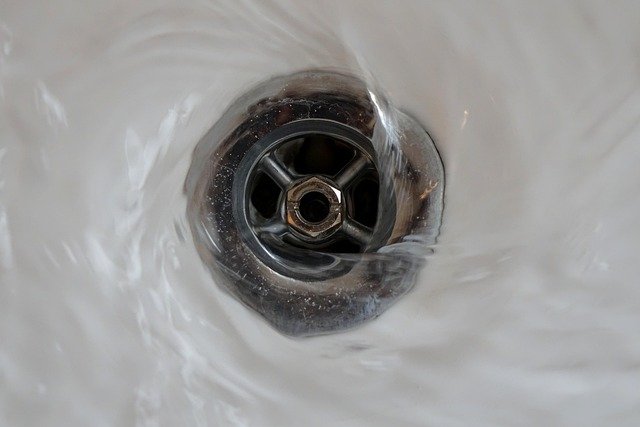Informed disinfection practices for kitchen and bathroom tile joints
Effective disinfection of tile joints in kitchens and bathrooms reduces visible stains and limits microbial growth. This article outlines practical, evidence-informed approaches for cleaning mortar seams, addressing biofilm and mildew, choosing sealants, and maintaining restored surfaces for longer-lasting hygiene.

Tile joints and the surrounding mortar are frequent sites for grime, discoloration, and microbial growth in kitchens and bathrooms. Proper disinfection goes beyond surface cleaning: it addresses biofilm that adheres to seams, identifies when restoration or sealant application is needed, and uses maintenance routines that reduce recurring stains and mildew. The guidance below focuses on practical, safe methods to disinfect joints while preserving tile finishes and prolonging the life of grout and mortar.
This article is for informational purposes only and should not be considered medical advice. Please consult a qualified healthcare professional for personalized guidance and treatment.
What causes stains, mildew, and mold in tile joints?
Tile joints and mortar are porous and frequently exposed to moisture, organic residue, and temperature changes. Organic soils from food or soap act as nutrients for mildew and mold, while damp seams and poor ventilation allow spores to settle and grow. Stains often result from ingrained dirt or mineral deposits from hard water. Repeated wet-dry cycles can break down sealants and leave seams vulnerable. Understanding these causes helps prioritize both cleaning techniques and preventive steps to limit recurring discoloration and biological growth.
How does biofilm form on mortar and seams?
Biofilm is a community of microbes embedded in a slimy matrix that adheres tightly to porous mortar and seam surfaces. In kitchens and bathrooms, biofilm accumulates where moisture and nutrients are present—under soap scum, around drains, and in grout lines. Mechanical action (scrubbing) plus appropriate disinfectants are needed to disrupt and remove biofilm because surface wiping often leaves the matrix intact. Addressing biofilm early prevents deeper colonization that later appears as persistent stains, mildew smell, or recurring mold.
What disinfecting methods are effective for tile joints?
Effective disinfecting begins with manual removal of soils: use a stiff nylon brush and a detergent appropriate for tiles to lift grime from seams. For biological contaminants, cleaners with active ingredients such as hydrogen peroxide, diluted bleach (sodium hypochlorite), or labeled antimicrobial agents may reduce microbial counts when used per manufacturer directions. Always test a small area first to ensure compatibility with tile and mortar. Combine mechanical scrubbing with a contact time long enough for the disinfectant to act, then rinse thoroughly to remove residues that might attract more dirt.
When to consider sealant or restoration for grout?
If mortar or grout shows crumbling, deep staining that does not respond to cleaning, or persistent moisture penetration, restoration steps are warranted. Repointing (removing damaged mortar and replacing it) restores joint integrity, while applying an appropriate penetrating sealant after full drying can reduce water ingress and staining. Choose sealants formulated for the substrate (cementitious versus epoxy grout) and follow drying/curing times. Restoration and sealing are preventive investments that make ongoing maintenance and disinfecting more effective.
How to include maintenance to prevent recurring stains?
Routine maintenance extends the life of joints: wipe wet areas after use, keep ventilation running, and schedule periodic deep cleaning to interrupt biofilm formation. Use pH-neutral cleaners for regular care and reserve stronger disinfectants for occasional treatments. Spot-treat stains promptly before they embed. A consistent schedule—monthly cleaning of high-use seams and quarterly inspections—helps catch early mortar deterioration and reduces the need for extensive restoration later.
Safe handling and ventilation for chemical disinfecting
When using chemical disinfectants, follow label instructions, wear gloves, and ensure good ventilation to minimize inhalation of fumes. Avoid mixing different chemistries (for example, bleach with acids or ammonia) as hazardous gases can form. Neutralize and rinse residues when required to protect tile finishes and reduce potential skin contact. For people with sensitivities, consider hydrogen peroxide-based products or steam cleaning where appropriate and compatible with the materials.
Conclusion
Informed disinfection of kitchen and bathroom tile joints combines targeted cleaning, disruption of biofilm, and sensible material care. Identify underlying causes—moisture, organic soils, or damaged mortar—then choose mechanical, chemical, or restorative approaches that match the surface and condition. Regular maintenance and correct sealant selection reduce recurrence of stains, mildew, and mold, helping seams remain functional and visually clean over time.





